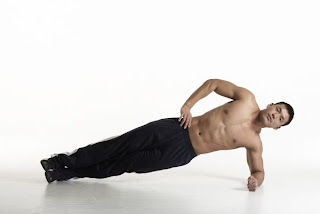It's Friday again and that means the week has left
us, we can put our work shoes away and put on our bike shoes. Here is the Core
Edition Part 1
Thanks
again to CL for his monthly input. Be sure to follow FitnessLab on twitter
@Fitnesslab and on facebook. To find out more information on training and just
being in good shape contact FitnessLab
The
Core of the matter:
In
a three part article, I will be dissecting the so-called core muscles that give
us our stable foundation to work from. The first part is going to tackle the “abdominal”
core region of the body and then in the following articles I will discuss the
hips and shoulders in two separate articles.
The
core muscles provide our body with a stable platform upon which to perform
movements and actions related to everyday living and/or sporting activities.
The more taxing the movement/action on the body (nervous system) the more we
require a stronger core to assist us. Sports that are performed under unstable
conditions, such as canoeing, ice hockey and surfing, require greater
assistance from the stabilising muscles of the body than compared to land based
bipedal sports like road running. It is therefore important we condition our
body to handle these “stressors” in order for us to perform the movements more
efficiently and effectively.
Now,
just because one sport has less physical demands than another, doesn’t mean we train
our body just enough to handle that sporting demands. No matter how challenging
the sport or action, we should always strive to train our body past its
potential. Our core doesn’t stop working at the end of a singletrack, we need
it firing optimally everyday beyond our 3 hour bike ride. So let’s look a
little closer at the mid section of the core and at the muscles which stabilise
the trunk.
Our
primary deep stabilising muscles are the Transverse abdominus and Multifidus. These
two muscles work like a corset to keep the torso tight and rigid and almost act
like the first layer of stabilisation during any movement in any direction.
These need to fire 100% of the time and must have a high endurance capability.
Superficially, the Rectus Abdominus, Obliques, Erector Spinae and Quadrates Lumborum
assist in keeping the truck erect and rigid. Additionally, the diaphragm and
Thoracolumbar fascia and pelvic floor muscle combine to ensure rigidity
posteriorly, superiorly and inferiorly. In all most like a box effect of our core
muscles give our body its “core” stabilisation to perform movements and
actions.
So
as you can see, there is quite a team of muscles working around our midsection
to ensure we have a solid platform to work off. Merely doing crunches and their
variations will not provide us with a conditioned midsection. If anything,
loads of crunches could actually be detrimental to training our core muscles.
These muscles need to be trained in various different planes and according to
the way we move in our sport and everyday living. Life and sport never hits us
from straight on!
So,
what trunk exercises can we incorporate into our training program for our
cycling?
Our
standard front plank is a great exercise to target both front and back core
muscles but instead of being on our elbows, position yourself on your hands
(similar to a full push-up position). In this position, we incorporate our
shoulder and arms in a similar position of that to holding on to our handlebars
when cycling.
 |
| Front Plank |
Lastly,
I would incorporate a glute bridge march in my abdominal core training program.
In this exercise, you lie on your back, with your knees bent and hips off the
floor. From this position lift one leg off the floor but keep the knee at a 90
degree angle. Thus you have one leg supporting the body which primes, the lower
lumbar muscles and obliques to stabilise the hips while holding this position.
Hold this position for 10 seconds and then change legs. This way, we challenge
each side of the body, especially the lower core areas, much like you would
with each pedal stroke.
 |
| Glute Bridge March |
In each of these diagrams, note how the demonstrators maintain a neutral spine/posture. There is no dropping of the hips in any position. This way we ensure we are conditioning the body in its most stable position and not overdeveloping one side over the other. It is critical that your primary focus is to find that neutral spinal curvature and it maintain it while performing each exercise. This is best done by using a mirror to give you feedback allowing you to make minor adjustments if need be.
These
exercises are the basis of your foundation for developing the midsection of the
“core”
Have
a great week and happy riding.


No comments:
Post a Comment